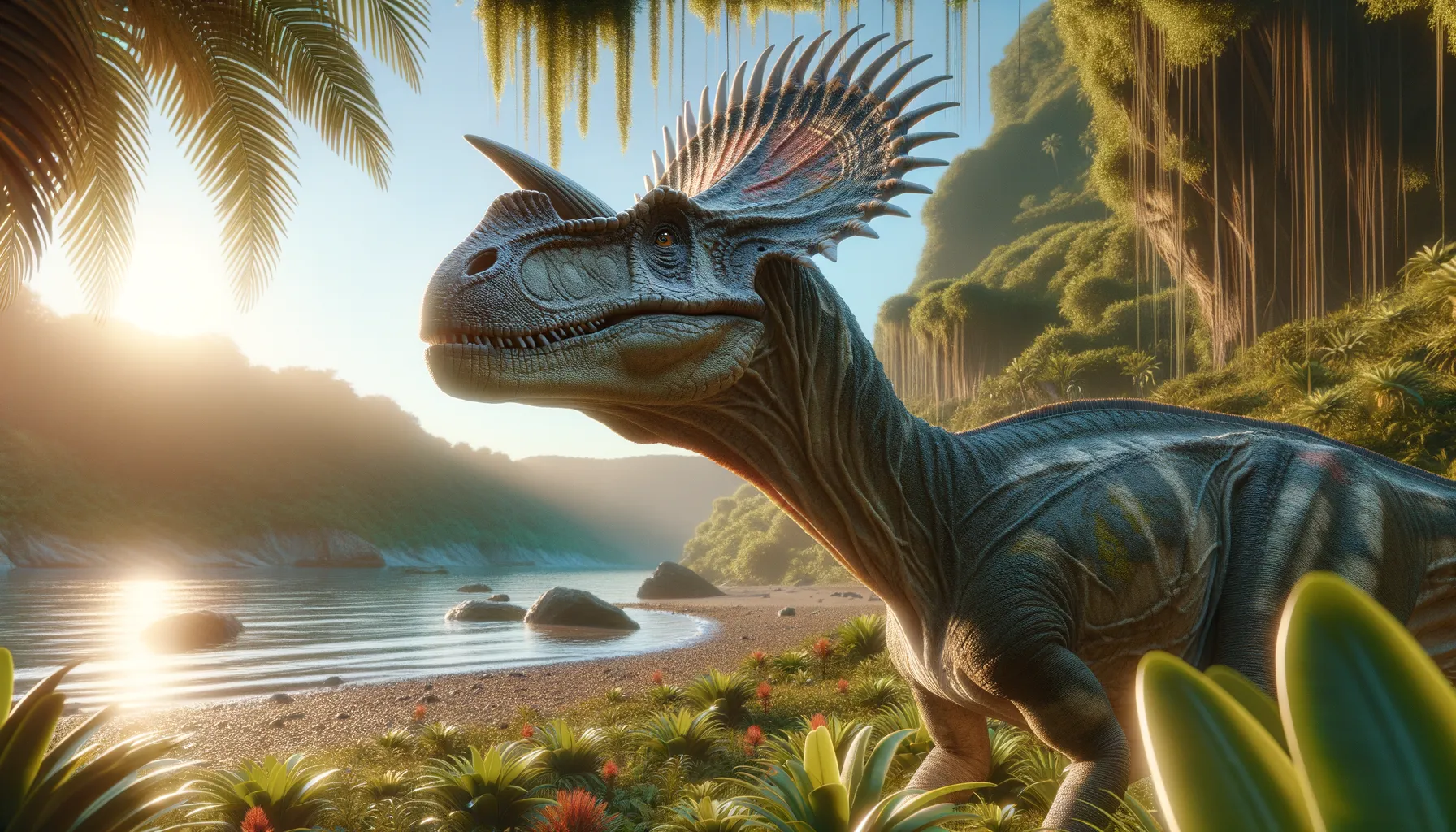
Lambeosaurus
The crested giant of the Cretaceous forests.
Period
Cretaceous
Length
Could reach lengths of up to 30 feet.
Height
Stood approximately 13 feet tall at the hips.
Weight
Weighed around 5 to 7 tons.
Lambeosaurus was a unique crested dinosaur from the Late Cretaceous period, known for its distinctive hollow cranial crest. This herbivorous dinosaur roamed North America, thriving in lush, coastal environments that provided abundant plant life. It is part of the hadrosaur family, known for being 'duck-billed' dinosaurs. The structure of its nasal passages suggests it may have used its crest for communication, possibly producing sound.
Diet
Lambeosaurus was a herbivore and primarily fed on a variety of plants, including leaves, twigs, and needles from conifers. It is believed to have used its duck-billed beak to strip vegetation efficiently, supplementing its diet with fruits and seeds when available.
Hunting
As a herbivore, Lambeosaurus did not hunt. Instead, it likely foraged for food along ancient floodplains and forested areas, using its keen sense of smell to identify edible plants.
Environmental challenges
Lambeosaurus faced environmental challenges such as fluctuating climates, which may have affected the availability of its plant-based diet. Periods of drought or extreme weather could disrupt their food sources. Additionally, as large herbivores, they needed to constantly find abundant vegetation to sustain their size. They also had to be wary of predators, such as theropods, that shared their habitat.
Speed
Moderate pace, suitable for a large herbivore.
Lifespan
Possibly lived for several decades if conditions were right.
First discovery
Discovered in 1914 by Canadian paleontologist Lawrence Lambe.
Fun Facts
- Lambeosaurus had a distinctive hatchet-shaped crest on its head, which was likely used for making sounds or attracting mates.
- This dinosaur lived during the Late Cretaceous period, about 76 to 75 million years ago.
- Lambeosaurus was a herbivore, meaning it ate plants, and it likely grazed on the vegetation that grew in its environment.
- Fossils of Lambeosaurus have been found in North America, particularly in places like Alberta, Canada and the western United States.
- The name 'Lambeosaurus' means 'Lambe's lizard', named after the paleontologist Lawrence Lambe.
- Lambeosaurus could grow up to 30 feet long, making it one of the larger duck-billed dinosaurs.
- It is believed that Lambeosaurus lived in herds, which provided safety in numbers from predators.
Growth and Development
Lambeosaurus experienced a rapid growth spurt during early years, much like modern birds. This quick growth helped them reach sizes necessary to fend off predators. Juveniles likely stayed in groups with their parents for protection. As they matured, these dinosaurs developed their characteristic cranial crests, which could have played a role in social signaling and mate attraction.
Habitat
Lambeosaurus inhabited lush, forested areas and floodplains of what is now North America. Their environment was rich in plant life, providing ample food supply. The Late Cretaceous period provided a warm climate, fostering a diverse ecosystem. Wetlands and rivers likely marked their territories, providing both drinking water and fertile land for vegetation.
Interaction with other species
Lambeosaurus likely traveled in herds, offering collective protection against predators. They could have shared their habitat with other hadrosaurs and herbivores, competing for the same plant resources. Carnivorous dinosaurs, such as Tyrannosaurus rex, posed threats, and Lambeosaurus might have relied on group behavior as a defense strategy.
Natural lifespan
In optimal conditions, Lambeosaurus could live up to 70 years.
Reproduction
Lambeosaurus reproduced by laying eggs, and nests were likely built in communal nesting grounds for safety. Parental care might have been evident, with adults protecting the young and possibly teaching them how to forage. The crests possibly played a role in mating displays, attracting potential partners.
Social behaviour
These dinosaurs likely had complex social structures, moving in herds for protection and resource optimization. Communication could have involved vocalizations produced through their unique crests. Cooperation within the herd would have been crucial for survival, especially in caregiving and predator defense.
Fossil locations
Fossils of Lambeosaurus have been primarily discovered in regions of North America, such as Alberta, Canada, and Montana, USA. These findings have provided insights into the dinosaur's environment and lifestyle. The well-preserved specimens offer a detailed look into their physical structure and the ecosystems they inhabited.
